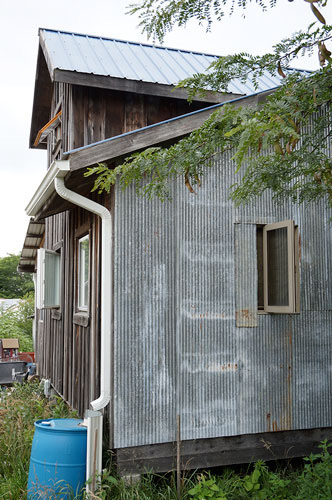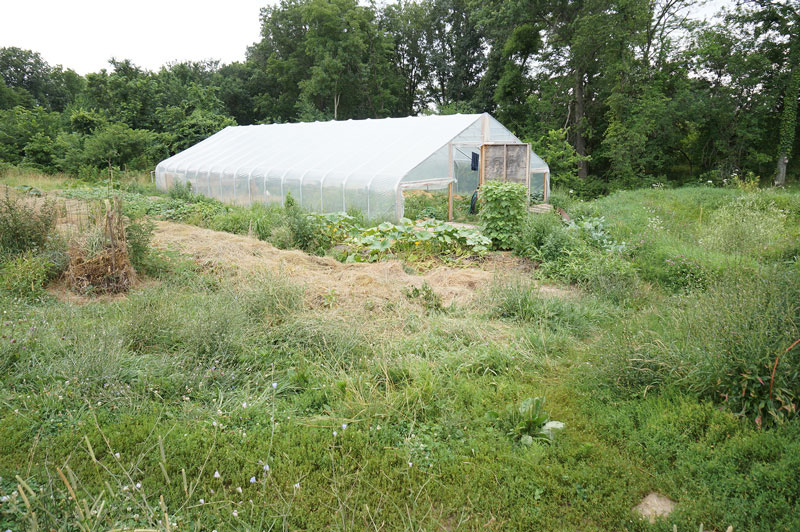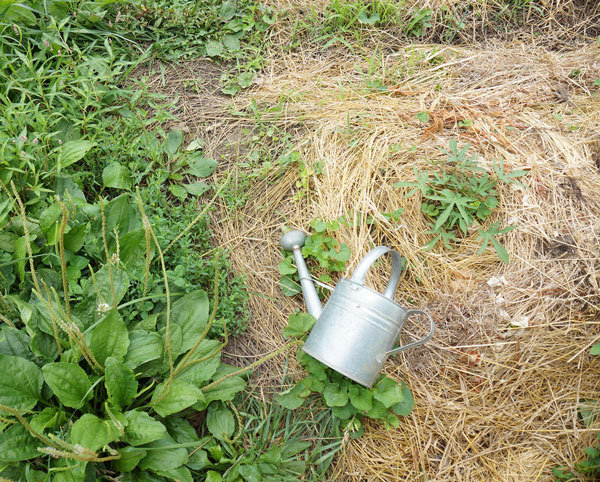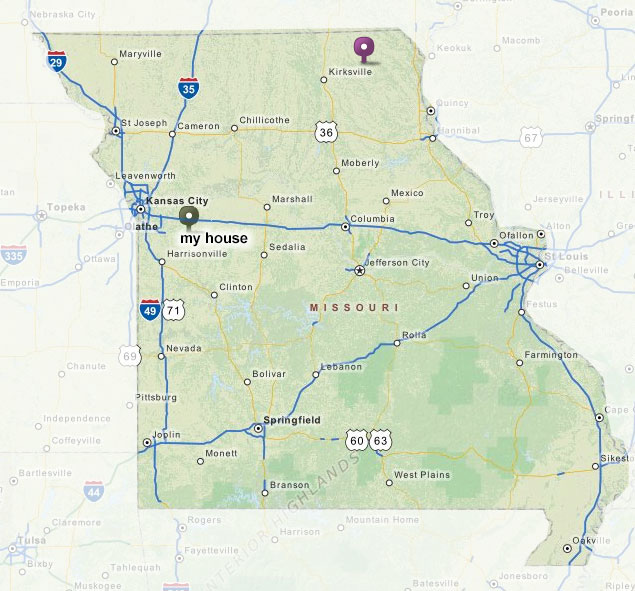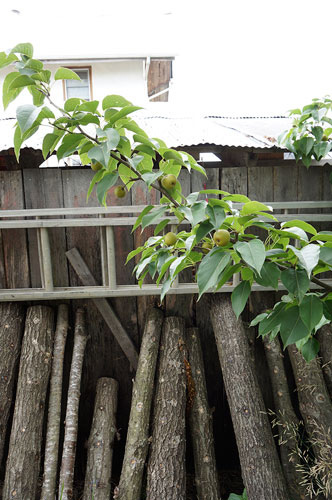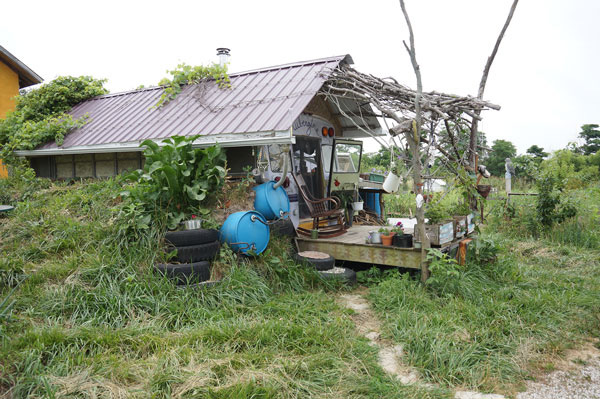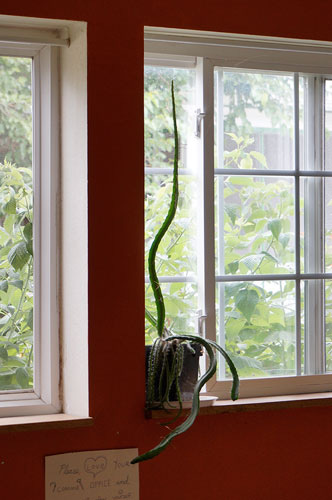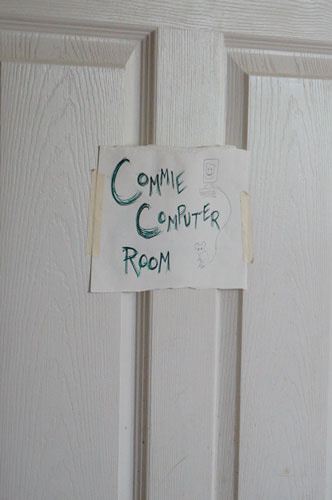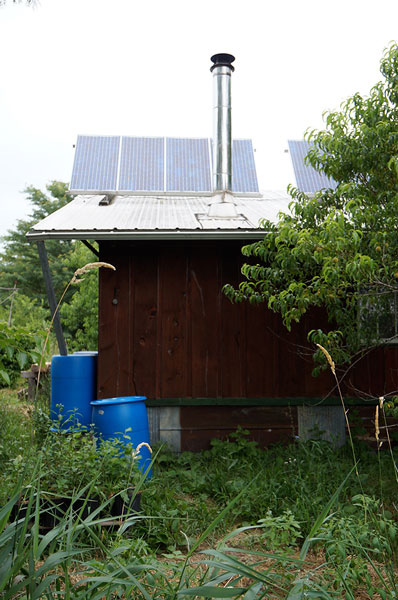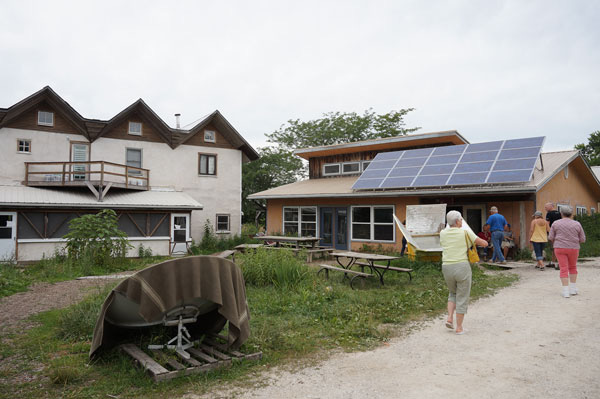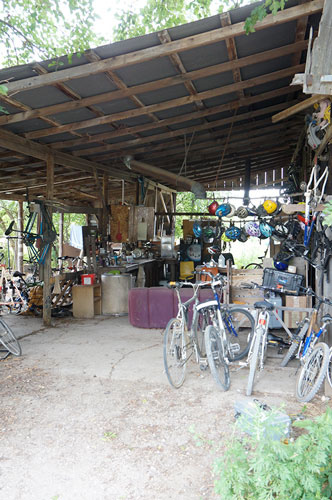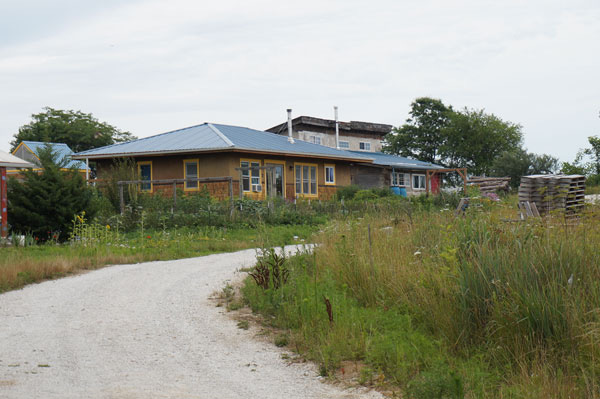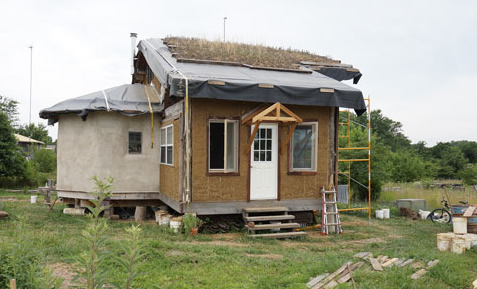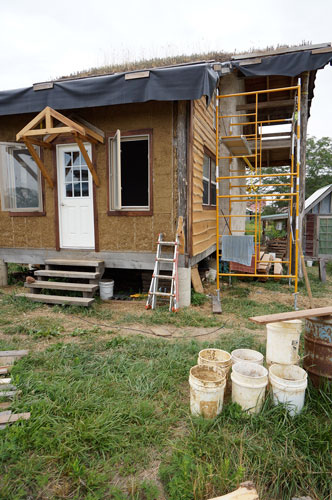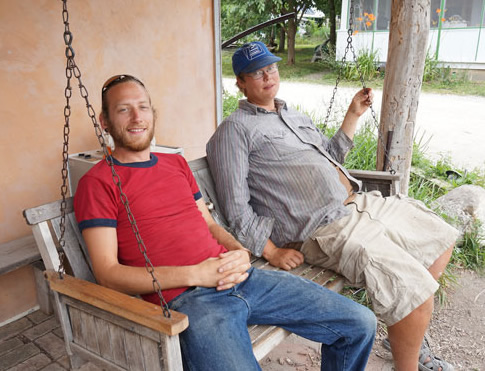
INTENTIONAL LIVING • REDUCED FOOTPRINT • SIMPLIFYING

 |
|||||||||||||||||||||||||
|
Northeast of Kirksville, Missouri is the town of Rutledge, and north of there are three eco-communities that are living deeply within their values of sustainability and love for nature. I was able to visit two of them and speak with some of their members. Early dialog, prior to the visit day, began with Danielle at Dancing Rabbit Eco-village and the prospect of interviewing members of their community. I was also in contact with Kim from Red Earth Farms. I arranged to go on the 1:00 second-Saturday tour of Dancing Rabbit and arranged to later cross the field to Kim’s place to meet and chat with her. I arrived early to Dancing Rabbit and met Danielle. She hooked me up with a “rabbit” willing to answer my questions. SunGee cheerfully gave me her story and feelings about living in the village. From her I learned how DR was structured with land leases and coops for just about anything you can think of (car use, water, electricity, eating, showers,...). The shared resources make the community’s footprint minimal and is a more effective use of them. Most of the “rabbits” work locally, telecommute, or work in the village. They incorporate old and new technologies as they best fit the goals. She believed if more resources were shared more people could be accommodated (alleviating poverty or shortages). It’s time to shift from a thinking where everyone has their own kitchen, house, car, etc. to group use. SunGee explained that she found the people of DR to be very honest, supportive, and emotionally mature. Openness and conflict resolution were very important there; vs. the outside world where anyone “could be an ass” to you.
Dancing Rabbit has a very active internship and visitor program. People can come, stay, work, and live along side the “rabbits,” learn eco-methods and tools for treading lighter. One of the questions I asked her was “if you could stand at a podium with hundreds of people listening to you attentively, what would you say?” She offered that she would probably talk about her lifestyle and how she came to be there hoping to inspire others with her personal story. Then I asked her “if you were to receive an enormous amount of money/resources to do anything with, what would you do?” SunGee said she would first build her “eco-groovy” house and then help build the new common house planned at DR. She would definitely put it back into the community to help everyone out. It was time for the tour and I thanked SunGee for her generosity. Our tour guide was Bob who gave a wonderful day-in-the-life of the village. It began in 1997 and continues to grow with 75 people currently living there. He shared their technological evolutions from stored power in batteries to their own energy coop of solar panels and wind turbines producing for their electrical needs and returning power to the grid.
After that tour ended I walked across the property, thankfully guided by an intern, to Red Earth Farms. They say it’s a small world. It is. The intern, Kyle, had attended Central Missouri State University. I went to school there and taught there at one point. We had some time before we walked back to Dancing Rabbit so we went into her hoop house nursery. She talked me through what she’d planted, how she harvested and prepared. Her house was positioned on the dam side of a pond (allowing for part of her house to be earth contact) and the pond was plumbed downhill to her vegetation through hoses. Kim sat down between two rows and proceeded to weed. I began my interview with her by asking what she did before Red Earth Farms. I sat on an overturned bucket and listened in total wonderment as she tells me she got an accounting degree, worked as a CPA in San Antonio, married, decided the life she was living was not what she and her partner wanted—it was not aligned with their values—visited Dancing Rabbit making friends with another couple there and decided to form Red Earth Farms which is a collection of individual lease-holds of individual farms/homesteads with a shared mission. Shortly after moving to community she and her partner split. She currently lives at a sub-community homestead called Dandelion—part of the greater Red Earth Farms. She’s raising her daughter, with the father living just across the pond, in this wonderful closed-loop world.
As she’s talking and weeding, I notice she’s not pulling what I would consider the “undesirables.” She left behind the clover and a couple others. I had planned on helping but was now sure I’d pull the wrong thing. And what she was pulling she would add to the hay mulching around her vegetable plants. I’m thinking to myself, “all this time, I’ve been wasting compost.” Kim works within her permaculture design. I need to study that more. I asked her if she had any concerns about the outside world regarding global warming, resources, quality of life, etc., and she told me she didn’t follow the news, she was too sensitive to it all and she figured if there was something she needed to know, someone would tell her. She didn’t think too much about the larger issues and chose to live her life there at REF taking on interns and talking to people like me to share knowledge. Her advice was for everyone to live their own vision, follow their own truth, not what you think others think you should follow. She noticed that during all the times in her life that things went wrong, she wasn’t living her own truth. I then asked her if she did any public speaking, lectures, or workshops. She said “no” and that she didn’t feel compelled to do that. She did write articles for a magazine (Communities: Life in Cooperative Culture / a publication of the Fellowship for Intentional Community). Through that, talking with curious people like me, and teaching interns, she was sharing what she knew.
My final question was the same as the one I’d asked SunGee at Dancing Rabbit: “If you were to receive an enormous amount of money/resources to do anything with, what would you do?” Kim said she would plant more fruit and nut trees (adding to the permaculture of her place), add more plants (she was considering buckwheat), and help support others who are trying to do the same thing.
It was time to head back to Dancing Rabbit and for me to take this information home to add to my other studies of other peoples who live connected to the land.
that our current systems keep people dependent, but instead of ranting (as I still want to do), they live the opposite. Their energy goes into building the life they see best fitting their values and vision—and in the most basic way. Very simply—just doing it. Of course, throughout the day I’m wondering to myself, “could I live this way?” Shared resources makes sense. The energy efficiency and sustainable materials and repurposing for their homes makes total sense, and as a designer was a complete turn-on. I’ve lived alone, independently, for a long time. I’m now on my 5-acre “island”. A place of refuge from the congestion and dirt of the city, and, don’t forget as SunGee pointed out, the asses. I foresee a paradigm change in my future. For now, I will incorporate as much of what I’m learning into my life. I agree with Kim on living your own truth. I didn’t always do that and fell into similar traps. Not any more. I think it’s an age thing for me. Wisdom is finally finding me. These folks I met this day found it sooner.
|
||||||||||||||||||||||||
|
In order to to this, I created a survey and polled my community for friends, colleagues, and family. Through a series of questions I got a bette idea of where many folks position themselves regarding environmental concerns and degree of engagement in sustainbility efforts.
|
||||||||||||||||||||||||

